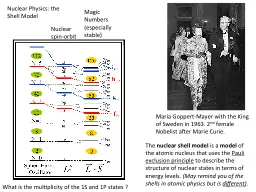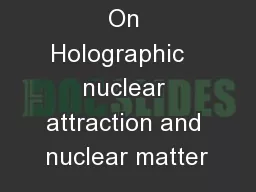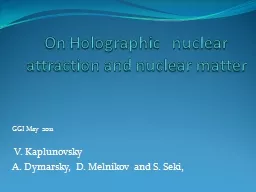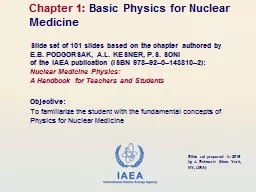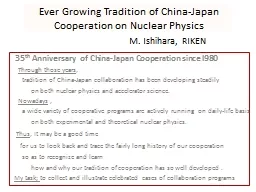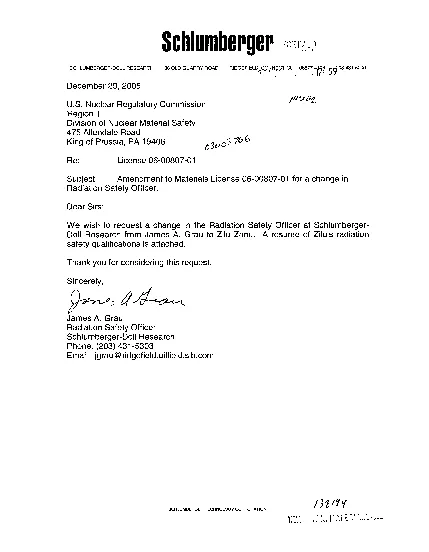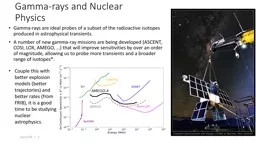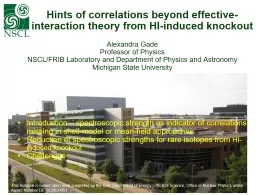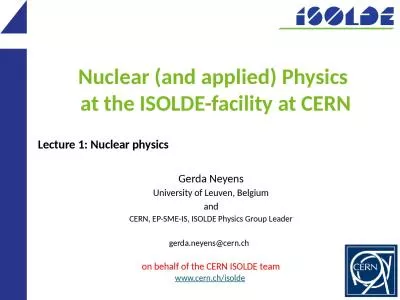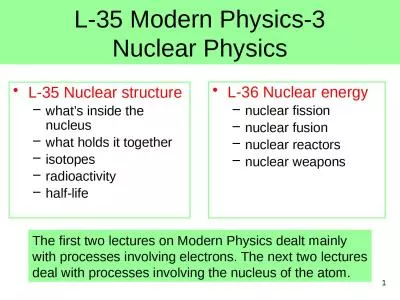PPT-Nuclear Physics: the Shell Model
Author : pamella-moone | Published Date : 2017-08-06
Maria Goppert Mayer with the King of Sweden in 1963 2 nd female Nobelist after Marie Curie Nuclear spinorbit Magic Numbers especially stable The nuclear shell
Presentation Embed Code
Download Presentation
Download Presentation The PPT/PDF document "Nuclear Physics: the Shell Model" is the property of its rightful owner. Permission is granted to download and print the materials on this website for personal, non-commercial use only, and to display it on your personal computer provided you do not modify the materials and that you retain all copyright notices contained in the materials. By downloading content from our website, you accept the terms of this agreement.
Nuclear Physics: the Shell Model: Transcript
Download Rules Of Document
"Nuclear Physics: the Shell Model"The content belongs to its owner. You may download and print it for personal use, without modification, and keep all copyright notices. By downloading, you agree to these terms.
Related Documents

